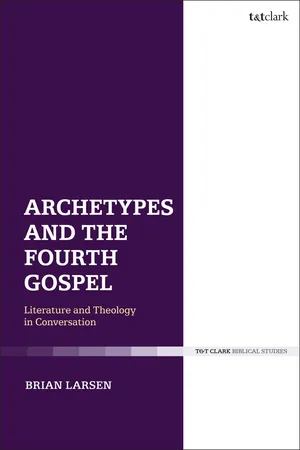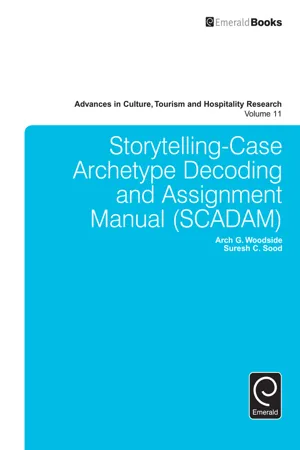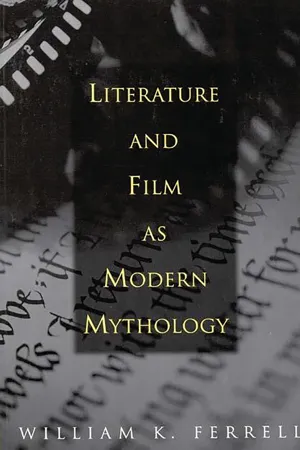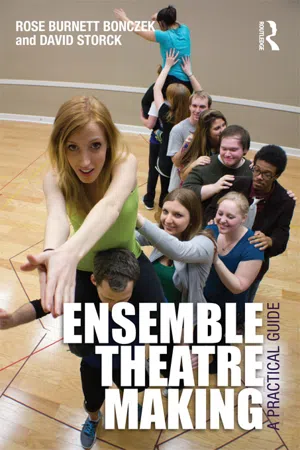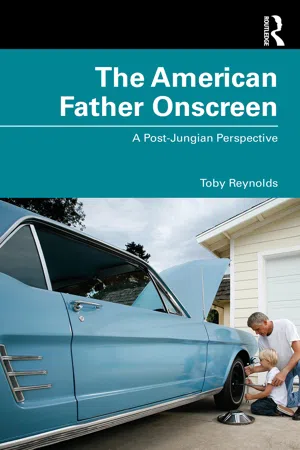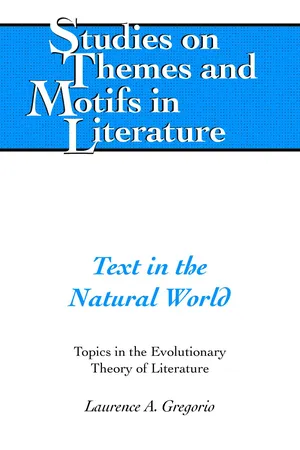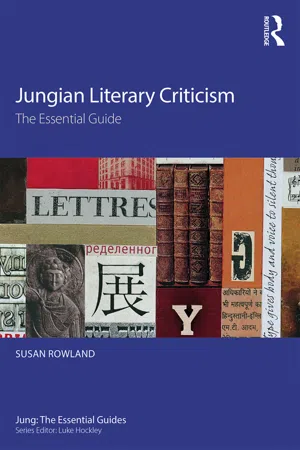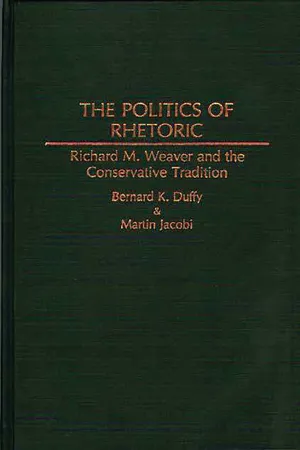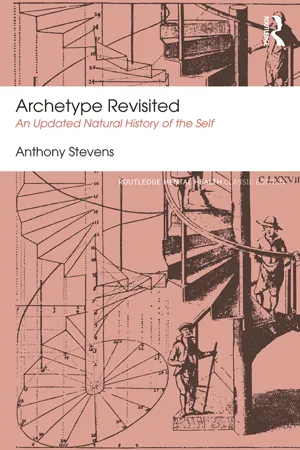Literature
Archetype
An archetype in literature refers to a universally recognized symbol, character, or theme that recurs across different cultures and time periods. These archetypes embody fundamental human experiences and are often used to evoke specific emotions or convey deeper meanings within a story. They serve as a way for authors to tap into collective unconscious and create resonant narratives.
Written by Perlego with AI-assistance
Related key terms
1 of 5
12 Key excerpts on "Archetype"
- eBook - PDF
Archetypes and the Fourth Gospel
Literature and Theology in Conversation
- Brian Larsen(Author)
- 2018(Publication Date)
- T&T Clark(Publisher)
It is like a deeply graven river-bed in the soul, in which the waters of life, that had spread hitherto with groping and uncertain course over wide but shallow surfaces, suddenly become a mighty river. This happens when that particular chain of circumstances is encountered which from immemorial time has contributed to the laying down of the primordial image. 2 Archetypes, Jung believes, appear in a variety of intellectual contexts, ranging from Plato’s concept of forms to Kant’s categories of human cognition and beyond. But rather than logical or metaphysical categories, Jung finds Archetypes rooted in depth 2 Carl Jung, Contributions to Analytical Psychology , trans. H. G. Baynes and C. F. Baynes (London: Kegan Paul, 1928), 246–47. Introduction 3 psychology. 3 For Jung, Archetypes are visible manifestations of something rooted in the deepest soil of human experience. 4 Frasier’s influential The Golden Bough pursues a similar line of thought from an anthropological perspective. 5 Whatever its source, in general terms the concept of Archetype has a long history and has been widely used in a number of disciplines. One of those disciplines is literary criticism. Lee offers the following definition of archetypal literary criticism: Archetypal criticism focuses on the generic, recurring and conventional elements in literature that cannot be explained as matters of historical influence or tradition. It studies each literary work as part of the whole of literature. This kind of criticism accepts as its informing principle that Archetypes—typical images, characters, narratives designs, themes, and other literary phenomena—are present in all literature and so provide the basis for study of its interconnectedness. 6 Or plainly, “The Archetype is simply the typical at the highest power of literary generalization.” 7 The application of archetypal analysis to literature received its most comprehensive and influential treatment in Northrop Frye’s Anatomy of Criticism (1957). - Arch G. Woodside, Suresh C. Sood, Arch G. Woodside, Suresh C. Sood(Authors)
- 2016(Publication Date)
- Emerald Group Publishing Limited(Publisher)
periods of history. Hence, there are similar archetypal patterns that mani-fest themselves in various forms amongst a variety of writings including stories, myths, and legends. The notable example of a mentor Merlin appears in the Arthurian Legends, the solitary hero and the Great Gatsby. Campbell (1973) writes of “the helpful crone and fairy godmother as a familiar feature of European fairy lore,” this female figure serves as a helper or guide to the novice in these stories. Independent of a biological basis or recurring patterns of thought in text, Archetypes behave in essence akin to an instinct or tendency in humans to organize experiences. The Archetype is ever ready to allow con-sumers to experience life events in a prescribed manner acting as a principle of guiding behavior but never before learnt. This supports both psychologi-cal and literary thinking as follows: … I do not intend that we “store” specific archetypal stories or myths, as C.G. Jung has proposed. That seems like misplaced concreteness. Rather, I mean a readiness or predisposition to organise experience into a narrative form, into plot structures and the rest. ( Bruner, 1990 ) This predisposition toward organizing allows for a consumer story to be the same overarching archetypal story shared between consumers while accommodating variations and nuances peculiar to individual circumstances. 3.2.1. Taxonomy of Archetypes Joseph Campbell saw the culturally coded Archetypes as representing mean-ing in a culture via iconic representation. Archetypal imagery stemming from mythology, rituals, and symbolism, as available online at the Archive for Research in Archetypal Symbolism ( ARAS, 2010 ) stem from early imprinting ( Rapaille, 1995 ) of experiences. These archetypal images are fre-quently personified in dreams, myths and fairytales and underlie a common theme through the shared associations.- eBook - PDF
- William K. Ferrell(Author)
- 2000(Publication Date)
- Praeger(Publisher)
During this evolutionary process, the meaning of the ritual becomes a part of the individual groups’ genetic makeup. What becomes reality is that myths, in their most basic form, are simply extensions of our human consciousness, being expressed as hopes and fears through the medium of art—what it means to be human. It would seem logical that these early cultures, by bringing to the light their deepest and most profound thoughts, are fulfilling a need for them Page 8 selves and their progeny. These ancient people’s lives were governed not by some high political, social, or economic system; rather, their primary concern was survival. Yet each culture developed a cadre of artists to create their narratives. These artists, labeled wizard, witch doctor, medicine man, or shaman, possessed intellectual abilities that separated them from the rest. They possessed the ability to interpret intuitively how people should live and to some extent why. It was their job to interpret the metaphysical world and place the information into a comprehensible form, the myth stories. We should not assume that all the stories from the myriad of cultures that have been preserved are profound, but it is not too difficult to separate those that are truly meaningful and thus assume archetypal status. Holman’s A Handbook to Literature defines Archetype as a literary form that ‘‘applies to an image, a descriptive detail, a plot pattern, or a character type that occurs frequently in literature, myth, religion, or folklore and is therefore believed to evoke profound emotions in the reader because it awakens a primordial image in his unconscious memory and thus calls into play illogical but strong responses” (40–41). Archetypal stories connect to each other and connect to us through the same instinctive nature that we, through our collective unconsciousness, share with those who originated them. - eBook - ePub
Ensemble Theatre Making
A Practical Guide
- Rose Burnett Bonczek, David Storck(Authors)
- 2012(Publication Date)
- Routledge(Publisher)
Whether you consider these moments of recognition as connected to primal instincts, or to the treasure chest of our collective unconsciousness, we recognize, seek, and avoid people in life based on this internal knowledge. Who is the hero/warrior who will protect us? Who is the caretaker/mother figure that will nurture us? Who is the physical or emotional predator/villain who may harm us? One definition of an Archetype is, “an original model or type after which other similar things are patterned; a prototype.” Or in Jungian psychology, “an inherited pattern of thought or symbolic imagery derived from the past collective experience and present in the individual unconscious.” Examples of some Archetypes include the Superman (the Omnipotent), the Hero (Beowulf or Harry Potter), the Wise Old Man (such as Obi-Wan Kenobi or Gandalf), the Trickster or Ape (such as Brer Rabbit or Bugs Bunny). We differentiate an Archetype from a stereotype, which the American Heritage Dictionary defines as, “a conventional, formulaic, and oversimplified conception. In modern usage, a stereotype is a simplified mental picture of an individual or group of people who share certain characteristic (or stereotypical) qualities.” The term is often used in a negative sense, and stereotypes are seen by many as undesirable beliefs that can be altered through education and/or familiarization. Throughout history, storytellers have drawn from recognizable characters and stereotypical situations, in order to quickly connect the audience with new tales. Archetypes are “original models” that are complex, stereotypes are “formulaic and oversimplified.” We can sometimes observe an Archetype in a story slide into a stereotype - eBook - ePub
The American Father Onscreen
A Post-Jungian Perspective
- Toby Reynolds(Author)
- 2021(Publication Date)
- Routledge(Publisher)
These are the patterns which influence our psychological development and growth. They are also the patterns that interact with our culture, our personal experiences and family lives to bring shape and form to an individual psyche. The Archetypes are the mechanism through which the psyche maintains its sense of balance and health. (2007, p. 25) Hauke, another leading post-Jungian writer on film, defines the Archetype as ‘the unconscious structuring principles of the psyche which make our experience, perception and behaviour distinctly human’ (2001, p. 244). Singh’s discussion and definition of the Archetype are directly quoted from Roger Brooke: A hypothetical construct, used to account for the similarity in the images that cluster around typically human themes and situations … anything said about the meaning of an archetypal image, or symbol, is only ever an approximation to this core. (2009, p. 121) This definition is clearly at odds with the more classical view of Stevens, refusing, as it does, to propose the Archetype as a solid feature, more a theoretical reaction to existing human behaviour. This divergence of opinion is one of the problems facing anyone attempting to define the Archetype as it excites and inspires so many differing views. For my own part, I disagree with Singh and Brooke’s cautious labelling of the Archetype as theoretical in that whilst it is an unconscious phenomenon, it can be known, at the very least, by the archetypal images that it produces and the behaviours it generates. Clearly something is present; the fact that it is essentially unknowable apart from the images it creates does not necessarily make it a hypothetical construct. Similar to the Freudian unconscious, it is discernible via the traces it leaves within culture and language. For the purposes of our discussion here, the Archetype can be defined as an unconscious but distinct nexus of dynamically essential psychic energy that is located within the collective unconscious - eBook - PDF
Text in the Natural World
Topics in the Evolutionary Theory of Literature
- Laurence A. Gregorio(Author)
- 2017(Publication Date)
- Peter Lang Group(Publisher)
form, function and device 127 The appeal is made here to the concept of the Archetypes in the collective unconscious to explain what is otherwise unexplainable, the overall similarity of form in literary expression (that is, aesthetic, or literary in its broad sense, not restricted to written language) the world over. The outward forms of narrative, theatrical representation and song are universal, and such similarity would not be foreordained by commonality of theme or vehicle of thought (moral and symbol respectively). The effecting of the mythological and the lyrical through literary form is just as universal. The only way to explain such facts is through a universal constant of the human mind, and the only mechanism to which to ascribe such a constant, in a species of seven billion (dating back to a tiny ances- tor population in Africa only 60,000 years ago, according to population geneti- cist Spencer Wells) that now covers the entire earth, is heredity. This points to evolution as the only avenue of development for humanity’s literary constants. The chain clearly went as follows: literary forms emanated from Archetypes (in the collective unconscious, if Jung’s model is accepted), Archetypes are obviously products of evolution, given their universality and uniformity, and natural selec- tion either molded the Archetypes directly for their enhancement of common survivability, or it allowed the emergence of Archetypes as a neutral or benefi- cial trait ancillary to some other evolutionary development. - eBook - ePub
Jungian Literary Criticism
The Essential Guide
- Susan Rowland(Author)
- 2018(Publication Date)
- Routledge(Publisher)
potentials for certain sorts of images, meanings, or patterns of behaviour (Jung 1954a, CW9i: para. 136). Only their images are visible or knowable and these images are never a pure Archetype. Rather, similar to an individual literary text re-working inherited forms in a creative union with contemporary elements, so too does the archetypal image evolve particularity from the way universal human inclinations are individually experienced.The various ways Jung chose to express the unknowable nature of Archetypes do suggest literary creativity. Archetypes are mysterious personalities wholly independent from the ego (ibid.: para. 80). Alternatively, some Archetypes are psychic processes, typical situations or transformations (ibid.). They are not inherited ideas, but rather the inherited possibility for ideas (ibid.: para. 136). The creativity of Archetypes is inexhaustible, androgynous, equally capable of any and all genders. Therefore, they may occur in literature as the generative energy that links worlds distant in space, time and culture. For example, the following sixteenth century lines portray a yearning and a peril that is both foreign and recognisable.They flee from me that sometime did me seek With naked foot, stalking in my chamber. I have seen them gentle, tame, and meek, That now are wild and do not remember That sometime they put themself in danger To take bread at my hand; and now they range, Busily seeking with a continual change.(Sir Thomas Wyatt (1503–1542) www.poetryfoundation.org/poems/45589/they-flee-from-me )Here is an archetypal, universal human situation of pain and loss. Where once the speaker was desired, even hunted in his rooms, now the pursuers run away from him. Those who were domestic, wanting a relationship with him are now savage in the sense of having lives no longer attuned to his home. Later lines move from the image of wild animals to the explicitly human, not least in evoking clothes falling off the beloved woman’s body. Part of the archetypal patterning of this poem is the erotics of hunting where what can apply to the stalking of deer is also true for lovers. - eBook - PDF
C.G. Jung and the Humanities
Toward a Hermeneutics of Culture
- Karin Barnaby, Pellegrino D'Acierno, Karin Barnaby, Pellegrino D'Acierno(Authors)
- 2017(Publication Date)
- Princeton University Press(Publisher)
There is a certain repertoire of narrative patterns or stories that are available to the human uncon- scious or psyche. Fiedler: Though there is a limited repertoire of narrative patterns, the meanings of them differ depending on the social context. This is es- pecially true at the oral stage, but remains so even when the patterns are fixed in print. It is, of course, their covert or encrypted meanings that change, so it is even possible (this is something that much in- trigues me) that they preserve on an unconscious level responses to the world around us that on a conscious level we have come to think of as archaic, outgrown, even antisocial. One of the functions of archetypal literature is to allow the expression of attitudes and beliefs that, on the level of high culture and ordinary social discourse, we disavow. In this sense the myths of popular culture are subversive myths, as the dead myths that are embodied in the scriptures and serve to reinforce our conscious values are not. Let me give you an example. In the late 1960s and early 1970s, there appeared a new constituency for a new arche- typal popular literature, the so-called Youth Cult books. An exami- nation of the most popular of these books, however, reveals the dis- concerting fact that though this generation was profoundly pacifist, their favorite books celebrated war and combat heroism. After dem- onstrating in the streets against United States involvement in the war in Vietnam, they went back to their own rooms where they read such things as the Dune tetralogy by Frank Herbert, which celebrated the warrior as hero and the ideal of Jihad, combat aimed at total extinction of the enemy: genocide. To understand this, one must understand that one of the functions of popular culture is to pay homage to the dark forces that we presumably disavow, what is called in Hebrew the yetz- erhara, the evil impulse or, in other words, Satan, the Devil. - eBook - ePub
- David Tacey(Author)
- 2012(Publication Date)
- Taylor & Francis(Publisher)
Part II ArchetypesPassage contains an image Archetypes Introduction
Chapter 5 : ‘On the concept of the Archetype’ (1938/1954)(From ‘Psychological aspects of the mother Archetype’, The Archetypes and the Collective Unconscious, The Collected Works Vol. 9, Part I, § 148–155)Archetypal theoryTo help the reader gain an overview of the theory of Archetypes, an essay is needed which ranges beyond the selections published in this anthology. Jung’s writings on archetypal theory are diverse and complicated, and yet not all have to be consulted to gain a critical perspective on the subject. What follows is my attempt to provide a fair and balanced assessment of a hotly contested topic.With Jung’s theory of Archetypes we come to the structural core of his psychology. Many artists, literary scholars, anthropologists and others have found his theory to be persuasive and illuminating. It appears to explain a great deal about the study of cultures, religions and the history of ideas. However, scientists have almost universally refuted Jung’s theory of Archetypes.1 I am not sure if the theory has always been fairly dismissed, or even if it has been understood before being refuted. James Hillman, making light of the controversy, said the theory should be reframed as myth rather than science. But it seems that the theory of Archetypes stands midway between myth and science, and has a foot in both camps. I would like to believe that the scientific reputation of Archetypes can be recovered, as scientists come to terms with its complexity and explanatory power.Archetypes are ‘identical psychic structures common to all’,2 which constitute ‘the archaic heritage of humanity’.3 Jung claims a distinguished lineage for his Archetypes; he resists the notion that he is responsible for inventing them, and argues that he has rediscovered them from historical sources. In this context, he claims as precedents Plato’s ‘ideas’ (§ 149), Kant’s ‘categories’ (§ 150) and Schopenhauer’s ‘prototypes’.4 The precise terminology is apparently not important, although the term ‘Archetype’ can be found in a range of ancient texts.5 What is important is our awareness that universal forces exist and have been noted throughout history. In ‘Instinct and the unconscious’, Jung views Archetypes as the psychological equivalents of instincts. He says the Archetype is ‘the instinct’s perception of itself, or the self-portrait of the instinct’.6 - eBook - PDF
The Politics of Rhetoric
Richard M. Weaver and the Conservative Tradition
- Bernard K. Duffy, Martin Jacobi(Authors)
- 1993(Publication Date)
- Praeger(Publisher)
Instead, he affirms only that truths partake of universal patterns within human minds and are transcendent only in this way. His distinction is the same one Burke makes between Plato and Kant when Burke says of Plato, "We need but take his universals out of heaven and situate them in the human mind (a process begun by Kant), making them not metaphysical but psychological" (Counter-Statement 48). Weaver's poets have access to these universal psychological truths, as we all do according to this view; their artistry is in the fullness with which they see and depict these truths and in their ability to prophesy persuasively about the effects of confrontations with these truths. Weaver thereby shifts the source of the poet's power from the supernat- ural to the natural, and his position on the origins of this power find sup- port in psychological and scientific theories. Artistic truths, like psycho- biologists' "biogrammatical triggers" and Carl Jung's Archetypes of the collective unconscious, are innate and psychological. Jung says that arche- types are "universal images that have existed since the remotest times"; they are the stuff that informs myths and are "first and foremost psychic phenomena that reveal the nature of the soul" ("Archetypes of the Collec- tive Unconscious" 206-7). Of the importance of cultural myths, Weaver says that they are "the great symbolic structure which hold together the 72 The Politics of Rhetori imagination of a people and provide bases of harmonious thought and ac- tion" (VO 34). The Archetypes that embody the myths reside in the depths of the collective unconscious, and poetry is able to drag from these depths, blurred and obscured though they are, glimpses of Archetypes. Certain of these archetypal images of a collective unconscious are col- lected in the "metaphysical dream" of the culture. Tyrannizing images, analogous to archetypal images, are compelling embodiments of shared be- liefs and attitudes. - eBook - ePub
Archetype Revisited
An Updated Natural History of the Self
- Anthony Stevens(Author)
- 2015(Publication Date)
- Routledge(Publisher)
CW 9, pt 1, para. 155)Jung’s first use of the term ‘Archetype’ came in 1919 (CW 8, para. 270). Greek in origin, it dates from classical times and means ‘prime imprinter’; usually it referred to an original manuscript from which later copies were made. The etymology of the word is instructive:The first element ‘arche’ signifies ‘beginning, origin, cause, primal source principle’, but it also signifies ‘position of a leader, supreme rule and government’ (in other words a kind of ‘dominant’): the second element ‘type’ means ‘blow and what is produced by a blow, the imprint of a coin … form, image, prototype, model, order, and norm’, … in the figurative, modern sense, ‘pattern underlying form, primordial form’ (the form, for example, ‘underlying’ a number of similar human, animal or vegetable specimens).(Jacobi 1959 )Although Jung’s original insights into the existence of archetypal phenomena were personal and largely subjective, abundant corroborative evidence has come not only from mythology and psychiatry, but also, in recent times, from ethology and sociobiology. Careful examination of patterns of behaviour as they manifest themselves in diverse human societies and different species of animals leads the unbiased mind to the conclusion that Jung was right: that ‘the collective unconscious contains the whole spiritual heritage of mankind’s evolution, born anew in the brain structure of every individual’ (CW 8, para. 342), that there are indeed universal forms of instinctive and social behaviour, as well as universally recurring symbols and motifs, and that these forms have been subject to the essentially biological processes of evolution no less than the anatomical and physiological structures whose homologous nature first established the truth of Darwin’s theory.The Archetypal Hypothesis Updated
Jung’s house dream, described on pp. 46-7, has continued to generate interest. Meredith Sabini (2000) of Berkeley, California, has described it as the ‘initial’ or foundation dream of analytical psychology, and sees it as ‘a living encounter with the phylogenetic foundation of our species, symbolized in this instance by the bones and neolithic artifacts in the cave [at the lowest level of the house]’. When discussing Archetypes, Jung often drew an analogy with the light spectrum. The ultraviolet end of the spectrum represented the spiritual or imaginal pole of the Archetype while the infrared represented the instinctive or biological pole (CW - Michael E. Salla(Author)
- 2001(Publication Date)
- Praeger(Publisher)
Jung inferred the existence of “Archetypes of the unconscious” through his close study of numerous cultures, religious practices, and mythologies throughout the world. 10 He explained the reason for his controversial in- ference in the manner of a social scientist convinced that s/he has amassed sufficient empirical evidence to validate a hypothesis: [T]he concept of the collective unconscious is neither a speculative nor a philo- sophical but an empirical matter. The question is simply this: are there or are there not unconscious, universal forms of this kind? . . . It is true that the diagnosis of the collective unconscious is not always an easy task. It is not sufficient to point out the often obviously archetypal nature of unconscious products, for these can 12 THE HERO’S JOURNEY TOWARD A SECOND AMERICAN CENTURY just as well be derived from acquisitions through language and education. . . . In spite of all these difficulties, there remain enough individual instances, showing the autochthonous revival of mythological motifs to put the matter beyond any rea- sonable doubt. 11 The myths handed down from generation to generation by peoples throughout the world provided the raw data for filling out these Archetypes, which Jung believed to be “ideas without content.” To explain the notion of an idea without content, we can look to Jung’s Mother Archetype. The idea or Archetype of a universal protective Mother recurs in numerous myths, yet the content of this idea varies greatly. We can begin with the benign, humble, and meek demeanor of the Virgin Mary rendered in El Greco’s famous painting of her floating in Heaven surrounded by adoring angels while lovingly holding the Christ Child, with a lamb situated im- mediately beneath her. Her demeanor is meek and benign, and her eyes are downcast—as are all depictions of the Virgin Mary in Christian literature. 12 She is depicted wearing royal blue signifying her role as Queen of Heaven, Mother of the universe.
Index pages curate the most relevant extracts from our library of academic textbooks. They’ve been created using an in-house natural language model (NLM), each adding context and meaning to key research topics.
